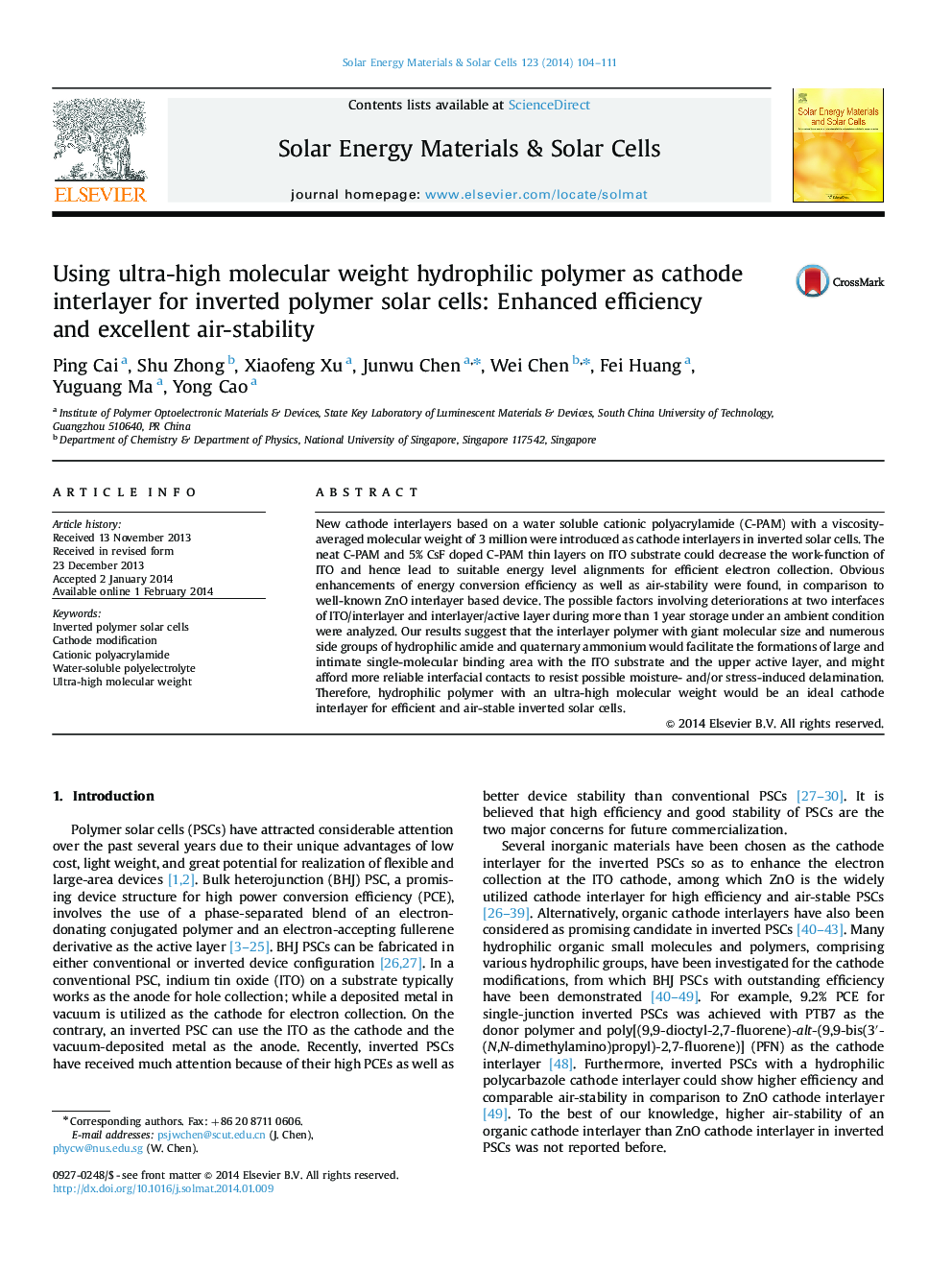| Article ID | Journal | Published Year | Pages | File Type |
|---|---|---|---|---|
| 78052 | Solar Energy Materials and Solar Cells | 2014 | 8 Pages |
•Water soluble and ultra-high molecular weight hydrophilic polymer as cathode interlayer on ITO.•Interlayer polymer shifts ITO work function to ~3.7 eV.•Inverted solar cells show higher efficiency and better air-stability when compared with well-known ZnO cathode interlayer.•Degradation mechanism analysis constructively focused on cathode interfaces.
New cathode interlayers based on a water soluble cationic polyacrylamide (C-PAM) with a viscosity-averaged molecular weight of 3 million were introduced as cathode interlayers in inverted solar cells. The neat C-PAM and 5% CsF doped C-PAM thin layers on ITO substrate could decrease the work-function of ITO and hence lead to suitable energy level alignments for efficient electron collection. Obvious enhancements of energy conversion efficiency as well as air-stability were found, in comparison to well-known ZnO interlayer based device. The possible factors involving deteriorations at two interfaces of ITO/interlayer and interlayer/active layer during more than 1 year storage under an ambient condition were analyzed. Our results suggest that the interlayer polymer with giant molecular size and numerous side groups of hydrophilic amide and quaternary ammonium would facilitate the formations of large and intimate single-molecular binding area with the ITO substrate and the upper active layer, and might afford more reliable interfacial contacts to resist possible moisture- and/or stress-induced delamination. Therefore, hydrophilic polymer with an ultra-high molecular weight would be an ideal cathode interlayer for efficient and air-stable inverted solar cells.
Graphical abstractFigure optionsDownload full-size imageDownload as PowerPoint slide
